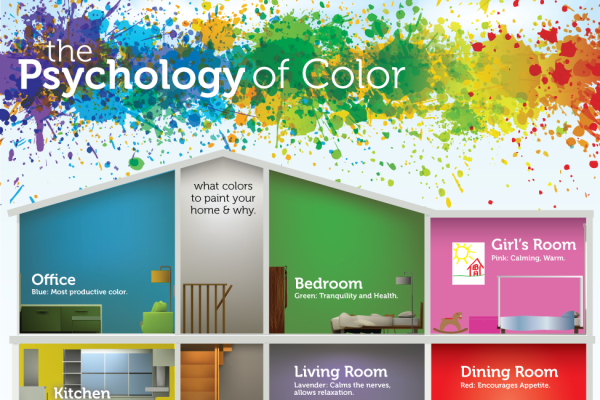Comprehending Exactly How Paint Choices Effect Your Emotions: The Psychology Behind Color Selections
Comprehending Exactly How Paint Choices Effect Your Emotions: The Psychology Behind Color Selections
Blog Article
Material By-Wyatt Poulsen
When it comes to choosing paint colors for a room, the selections made prolong past plain visual appeals. The psychology of color delves into just how various tones can influence our feelings and psychological health, shaping the setting of an area in extensive means. Comprehending the effect of color on mood can bring about willful and critical layout choices that cater to enhancing different elements of our daily lives. By discovering the elaborate partnership in between shade and psychology, one can discover the refined yet effective ways in which paint selections influence our psychological experiences within a given environment.
The Impact of Shade on Feelings
Regularly, the shades we border ourselves with can considerably influence our emotional state and overall well-being. The impact of shade on emotions is a well-researched field within psychology and interior design.
Warm shades like red, orange, and yellow are recognized to evoke sensations of energy, heat, and comfort. These colors can boost discussion and create a relaxing setting in a room.
In please click the up coming article , trendy colors such as blue, environment-friendly, and purple tend to have a relaxing result, promoting relaxation and serenity. These colors are usually favored in bed rooms and workplaces to produce a sense of peacefulness.
In addition, the intensity and saturation of shades play a crucial duty in determining their emotional influence. Brilliant, lively shades can generate sensations of exhilaration and interest, while muted tones are much more soothing and mild.
It is important to think about the desired psychological feedback when picking paint shades for various spaces in your home or workspace. By understanding the psychology of color, you can develop settings that sustain your emotional wellness and enhance your total mood.
Selecting the Right Paint Colors
Recognizing the psychology of color and its impact on emotions can guide individuals in choosing the best paint colors for their living spaces. When picking paint colors, it's necessary to take into consideration the state of mind you wish to create in each room.
For example, soothing shades like blue and green are optimal for bedrooms and relaxation areas, as they promote a sense of serenity. On the other hand, lively tones like yellow or red can stimulate and promote conversation in social spaces such as living areas or eating locations.
Along with the emotional impact, the dimension and lights of an area ought to additionally influence shade selections. residential home painters can make a small room feel more large, while darker tones can include warmth and comfort to larger areas. https://findapainternearme10864.actoblog.com/34562374/desire-a-home-that-is-filled-with-freshness-and-vibrancy-look-into-the-understanding-of-proficient-residence-painters-and-discover-the-crucial-components-that-turn-a-house-into-a-genuine-home -natural light improves the way shades appear, so it's critical to check paint examples in various lighting conditions before making a final decision.
Ultimately, picking the ideal paint shades involves a thoughtful factor to consider of both psychological responses and functional aspects to create an unified and comfy living environment.
Producing the Preferred Environment
Accomplishing the desired environment in a room entails a critical mix of color choices and lighting factors to consider. Shade plays an important function in establishing the state of mind of a space. Warm tones like reds, oranges, and yellows can produce a relaxing and inviting ambience, excellent for spaces where convenience is crucial, such as living spaces or rooms.
On the other hand, great colors like blues and greens evoke a sense of calm and leisure, making them optimal for areas where harmony is preferred, like bathrooms or reflection rooms.
In addition to shade, lighting is another important consider shaping the atmosphere of a room. Soft, warm lighting can improve the heat of a space, while brilliant, cool lighting can energize and boost the mood. Dimmer buttons or adjustable illumination fixtures offer versatility, permitting you to adjust the lights to match various tasks or moods throughout the day.
Final thought
To conclude, the psychology of shade shows the considerable effect paint choices can have on our mood and feelings within a space.
By recognizing exactly how different colors evoke particular sensations and selecting paint colors accordingly, we can produce settings that promote power, comfort, leisure, or excitement.
Very carefully picking the appropriate shades can aid us to influence our mood and general well-being in a provided space.
